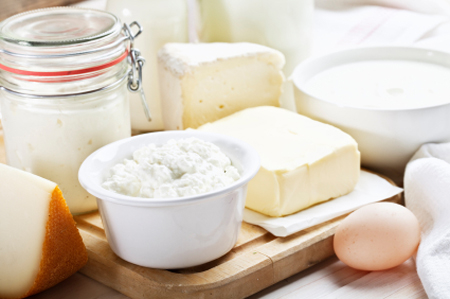Rabobank, again, dampens hopes for dairy price revival
Category: Dairy
 (Agrimoney) – Rabobank, citing “strong” European Union milk production, put back – again – expectations for the revival in dairy markets, forecasting that whole milk powder will not until late next year return to $3,000 a tonne.
(Agrimoney) – Rabobank, citing “strong” European Union milk production, put back – again – expectations for the revival in dairy markets, forecasting that whole milk powder will not until late next year return to $3,000 a tonne.
The bank said that there were some signs of optimism for dairy producers, who saw prices fall earlier in 2015 to a 13-year low, with the import slowdown in the key Chinese and Russian markets decelerating to 17% in the July-too-September quarter.
In China – whose turn from hoarding milk to relying on running down its stockpiles has been a key factor in the dairy downturn – a large part of the inventory overhang has now been eliminated.
“The drawdown on stock has removed around 50% of inventory from warehouses,” Rabobank said.
“Industry channel checks in China even suggest a slightly more optimistic tone.”
The bank added that “we continue to believe that dairy demand is picking up modestly in China”, with the annual growth rate forecast increasing from 2% in the first half of 2016 to 2.5% in the second half, “although it remains a shadow of the market it was a few years ago”.
New Zealand fears
Furthermore, on the production side, the bank stuck by expectations of a sharp drop, of 7-10%, in milk output in New Zealand, the top dairy exporting country, ahead of the 6% drop expected by Fonterra.
Besides the disincentive to production from low milk prices, “compounding the situation, pasture growth conditions have not been as favourable for most of the country compared to last season”, Rabobank said.
Indeed, the El Nino weather pattern looks set to extend a period of “unfavourable pasture conditions.
“Soil moisture levels are already low for key dairying regions in Canterbury, Waikato and Taranaki, providing a risky foundation for summer milk flows.”
‘Still advancing strongly’
However, milk output in the top seven producing countries overall will contract by just 0.1% in the first half of next year, less than the 0.6% shrinkage previously expected, thanks to buoyant output in the EU after the ditching of production quotas in April.
“Production growth has slowed considerably in key export regions as a group, but less dramatically than we anticipated.
“EU production is still advancing strongly,” rising by 2.5% year on year in the first seven months after the quota was lifted, led by surges in Dutch and Irish volumes.
Besides mild weather, which boosted late pasture growth, output has also been encouraged by prices which have “held up better than anticipated”, helped in part by weakness in the euro.
EU farmers received an average of E30.49 per 100 kilogrammes in October, up from E29.72 in August, with prices, while “below the full cost of production for many… generally above operational costs”.
The bloc’s output will rise by 1.9% in the first half of next year, compared with a previous estimate that volumes will “barely grow at all”.
‘Somewhat weaker trajectory’
Rabobank said that upward pressure on prices, which have “failed to show any real signs of recovery” in the October-to-December quarter, “will still build” over the year ahead.
“But we delayed the timing of the recovery, and envisage a somewhat weaker trajectory than had had a few months prior.”
The bank slashed by $500 a tonne to $2,500 a tonne its forecast for whole milk powder prices in Oceania as of the April-to-June quarter, and by $800 a tonne to $2,000 a tonne its forecast for skim milk prices during the period.




